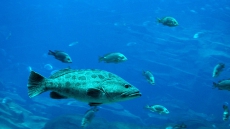Birds have an innate ability to maneuver in mid-air, a talent that could have helped their ancestors learn to fly rather than fall from a perch, says a study.
Even ungainly, day-old baby birds successfully use their flapping wings to right themselves when they fall from a nest, a skill that improves with age until they become coordinated and graceful flyers, the findings showed.
"From day one, post-hatching, 25 percent of these birds can basically roll in mid-air and land on their feet when you drop them," said Robert Dudley, a professor of integrative biology at University of California - Berkeley in the US.
"This suggests that even rudimentary wings can serve a very useful aerodynamic purpose," Dudley noted.
The study looked at how baby birds, in this case chukar partridges, pheasant-like game birds from Eurasia, react when they fall upside down.
The nestlings right themselves by pumping their wings asymmetrically to flip or roll.
By nine days after hatching, 100 percent of the birds in the study have developed coordinated or symmetric flapping, plus body pitch control to right themselves.
"These abilities develop very quickly after hatching, and occur before other previously described uses of the wings, such as for weight support during wing-assisted incline running," said Dennis Evangelista from University of North Carolina.
"The results highlight the importance of maneuvering and control in development and evolution of flight in birds," Evangelista added.
The findings appeared in the online journal Biology Letters.





